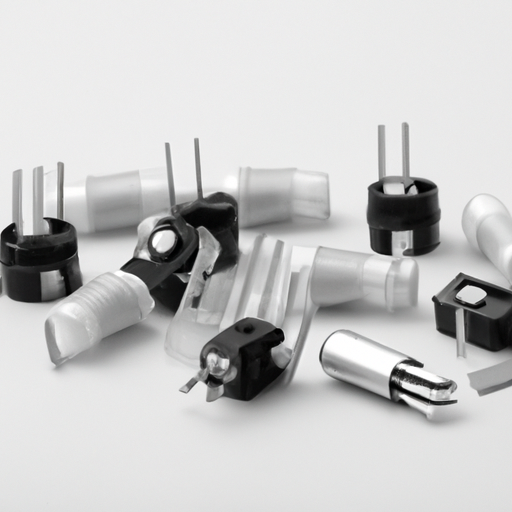The global LED transmitter market is expected to witness significant growth in the coming years, driven by the increasing adoption of LED technology in various applications such as automotive, consumer electronics, and healthcare. LED transmitters are devices that use light-emitting diodes (LEDs) to transmit data wirelessly, offering a more efficient and reliable alternative to traditional radio frequency (RF) communication.

The automotive industry is expected to be a major driver of growth for the LED transmitter market, as automakers increasingly adopt LED technology for vehicle-to-vehicle (V2V) and vehicle-to-infrastructure (V2I) communication. LED transmitters offer higher data rates and lower latency compared to RF communication, making them ideal for applications such as collision avoidance systems and traffic management. Furthermore, LED transmitters are more energy-efficient than RF communication, helping automakers meet stringent fuel efficiency standards.
The consumer electronics industry is another key market for LED transmitters, as manufacturers look to integrate wireless communication capabilities into a wide range of devices, including smartphones, tablets, and smartwatches. LED transmitters offer a cost-effective and energy-efficient solution for short-range data transmission, enabling seamless connectivity between devices without the need for complex RF antennas. Additionally, LED transmitters can be easily integrated into existing LED displays, providing a compact and versatile solution for wireless communication.
In the healthcare industry, LED transmitters are being used for a variety of applications, including patient monitoring, medical imaging, and telemedicine. LED transmitters offer a safe and reliable solution for transmitting sensitive medical data wirelessly, enabling healthcare providers to monitor patients remotely and make timely decisions based on real-time data. Additionally, LED transmitters can be integrated into wearable devices and medical sensors, providing a seamless and unobtrusive solution for continuous health monitoring.
Despite the promising growth prospects, the LED transmitter market faces several challenges that could hinder its expansion. One of the key challenges is the limited range of LED transmitters, which typically have a shorter range compared to RF communication. This could restrict the adoption of LED transmitters in applications that require long-range communication, such as outdoor lighting and smart city infrastructure.
Another challenge facing the LED transmitter market is the lack of standardization in LED communication protocols, which could hinder interoperability between different devices and systems. To address this issue, industry stakeholders are working towards developing common standards for LED communication, such as the IEEE 802.15.7 standard for visible light communication (VLC). Standardization efforts are expected to accelerate the adoption of LED transmitters in various applications and drive market growth in the coming years.
In conclusion, the global LED transmitter market is poised for significant growth in the coming years, driven by the increasing adoption of LED technology in various industries. LED transmitters offer a more efficient and reliable alternative to traditional RF communication, enabling high-speed and secure data transmission in a wide range of applications. While the market faces challenges such as limited range and lack of standardization, ongoing efforts to address these issues are expected to drive market growth and unlock new opportunities for industry players.
The global LED transmitter market is expected to witness significant growth in the coming years, driven by the increasing adoption of LED technology in various applications such as automotive, consumer electronics, and healthcare. LED transmitters are devices that use light-emitting diodes (LEDs) to transmit data wirelessly, offering a more efficient and reliable alternative to traditional radio frequency (RF) communication.

The automotive industry is expected to be a major driver of growth for the LED transmitter market, as automakers increasingly adopt LED technology for vehicle-to-vehicle (V2V) and vehicle-to-infrastructure (V2I) communication. LED transmitters offer higher data rates and lower latency compared to RF communication, making them ideal for applications such as collision avoidance systems and traffic management. Furthermore, LED transmitters are more energy-efficient than RF communication, helping automakers meet stringent fuel efficiency standards.
The consumer electronics industry is another key market for LED transmitters, as manufacturers look to integrate wireless communication capabilities into a wide range of devices, including smartphones, tablets, and smartwatches. LED transmitters offer a cost-effective and energy-efficient solution for short-range data transmission, enabling seamless connectivity between devices without the need for complex RF antennas. Additionally, LED transmitters can be easily integrated into existing LED displays, providing a compact and versatile solution for wireless communication.
In the healthcare industry, LED transmitters are being used for a variety of applications, including patient monitoring, medical imaging, and telemedicine. LED transmitters offer a safe and reliable solution for transmitting sensitive medical data wirelessly, enabling healthcare providers to monitor patients remotely and make timely decisions based on real-time data. Additionally, LED transmitters can be integrated into wearable devices and medical sensors, providing a seamless and unobtrusive solution for continuous health monitoring.
Despite the promising growth prospects, the LED transmitter market faces several challenges that could hinder its expansion. One of the key challenges is the limited range of LED transmitters, which typically have a shorter range compared to RF communication. This could restrict the adoption of LED transmitters in applications that require long-range communication, such as outdoor lighting and smart city infrastructure.
Another challenge facing the LED transmitter market is the lack of standardization in LED communication protocols, which could hinder interoperability between different devices and systems. To address this issue, industry stakeholders are working towards developing common standards for LED communication, such as the IEEE 802.15.7 standard for visible light communication (VLC). Standardization efforts are expected to accelerate the adoption of LED transmitters in various applications and drive market growth in the coming years.
In conclusion, the global LED transmitter market is poised for significant growth in the coming years, driven by the increasing adoption of LED technology in various industries. LED transmitters offer a more efficient and reliable alternative to traditional RF communication, enabling high-speed and secure data transmission in a wide range of applications. While the market faces challenges such as limited range and lack of standardization, ongoing efforts to address these issues are expected to drive market growth and unlock new opportunities for industry players.